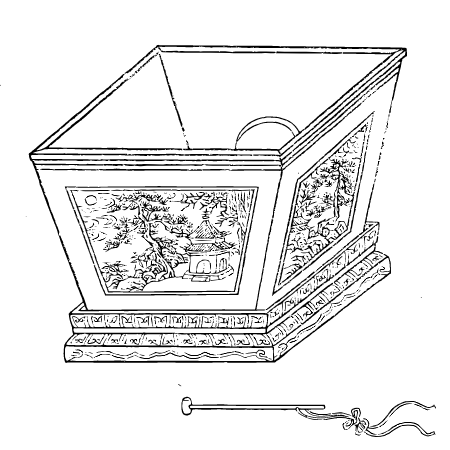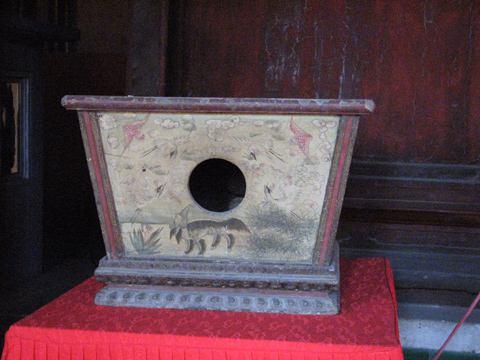The shape and performance of the bamboo
It is said that the vertebrae are separated: Zheng Xuan of the Eastern Han Dynasty commented on the "Shangshu", which mentioned that "the vertebra is shaped like a lacquer bucket, and has vertebrae. When it is in harmony, the vertebra is thrown into it and hits it."
1. Separation of vertebrae and vertebrae
Zheng Xuan of the Eastern Han Dynasty commented on the "Book of History", which mentioned that "the vertebrae are shaped like a lacquer bucket, but have vertebrae, and they are thrown into the vertebrae when they are in harmony." separation.
2. It is said that the vertebra and the vertebra are integrated
Guo Pu of the Western Jin Dynasty commented on "Er Ya", and he said, "The turret is like a lacquer bucket, two feet four inches square, one foot eight inches deep, with a vertebral handle connected to the bottom, and the order is to strike left and right." Du You's "Er Ya" of the Tang Dynasty also mentioned that "the scorpion is like a lacquer bucket, two feet four inches square and one foot eight inches deep, with a vertebral handle connected to the bottom and a hole on the side. The inner hand hits it in the middle for music. "That is to say, the vertebrae are directly connected to the inside of the scorpion. When playing music, put your hand in (probably through the "side opening"), and shake the vertebrae left and right to hit the scorpion to make sounds.

By the Qing Dynasty, the shape had changed again. According to the "King Ding Dynasty Tong Dian", it was recorded: "The scorpion, so the music; the upper part is wide and the lower part is small, like a square bucket, with round drums in the middle of the three sides to be attacked, and a round hole on one side to get out. Sound." Judging from the existing utensils, the single-sided drum is set on the inner side of the three sides, and the effect can only be achieved by hitting from the inner side; it can be reasonably inferred that in the Qing Dynasty, the drum was hit only on the inner side. Zhuzhong Yuangu has not been mentioned in the literature before, and since the Song Dynasty hit the inside and outside, it should not be, it may be an innovation of the Qing Dynasty.

The scorpion used in today's Chinese circle, such as the ceremony of offering sacrifices to the hole, is generally formed by separating the upper vertebrae and using it to strike three times from the inside. There are detailed changes such as the presence or absence of drums, size, position, and the size and position of the round holes. For example, the Confucian Temple in Tainan has no drums, and Taipei has drums.
 渝公网安备 50010702504639号
渝公网安备 50010702504639号